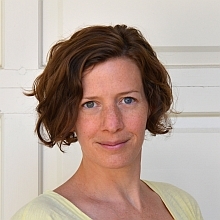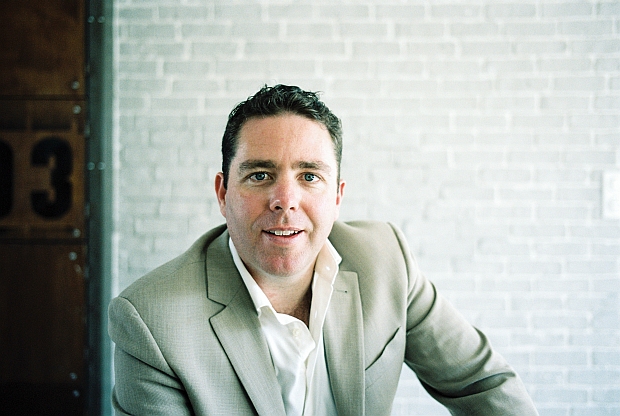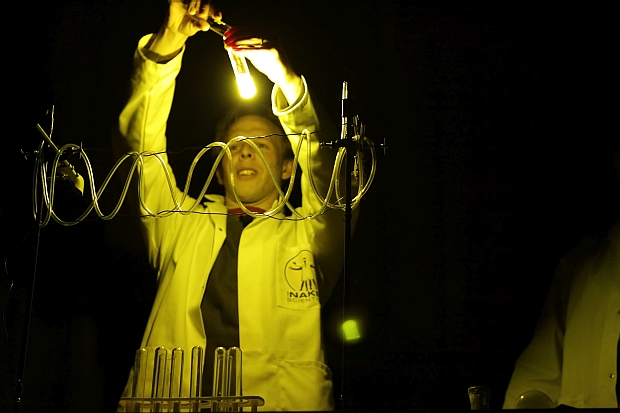This Way Up for Saturday 16 May 2015
Age prediction websites
 You upload a photo of your face, wait a second or two, and there on the screen is your projected age; it's a bit like a game of Russian Roulette for your ego!
You upload a photo of your face, wait a second or two, and there on the screen is your projected age; it's a bit like a game of Russian Roulette for your ego!
But can you accurately predict your age from a photo of your face, and even use it to tell when you're going to die? A wave of age identification websites like facemyage.com and how-old.net is raising this intriguing prospect.
The machine learning and facial analytics technology underpinning these services is interesting everyone from Microsoft to insurance companies.
Nicola Twilley, the author of the blog Edible Geography and a co-host of the Gastropod podcast, has written about how your face can show your age for newyorker.com and she spoke to This Way Up's Simon Morton.
Tech: Facebook's Instant Articles

Peter Griffin talks technology, and Facebook teams up with the likes of the New York Times and Buzzfeed to put more news into your newsfeed with Instant Articles.
Mussel breeding

Greenshell™ mussels from Cawthron Institute’s shellfish breeding programme (baby mussels on the right.) Photo: Cawthron Institute

Ocean science Photo: Cawthron Institute
The New Zealand green-lipped mussel, aka perna canalicula, kuku or the greenshell mussel to use a trademarked term, is a major export earner and a key part of New Zealand's aquaculture industry. But farming them on a commercial scale has its challenges.
Traditionally, seaweed laden with tiny fertilised mussel eggs or spat is harvested from Ninety Mile Beach in Northland, then trucked around the country to mussel farms. An intricate process involving boats, ropes, seaweed and stockings is then used to get them growing, but just a few percent of the spat actually make it to harvest and onto our plates.
Now scientists are trying to do the breeding in the lab and then keep the mussels in nurseries until they're large enough to go into mussel farms. The survival rate of these hatchery-bred mussels could be many times higher than existing aquaculture methods. It would also allow scientists to selectively breed for specific traits, for example mussels that are faster-growing or more meaty.
This Way Up's Simon Morton went to meet Henry Kaspar, who is a mussel breeding specialist and a senior scientist at the Cawthron Institute.

Cawthron Institute aquaculture scientist Henry Kaspar. Photo: Cawthron Institute
Face mites

Face mite. Photo: USDA. Confocal and Electron Microcopy Unit
What's got eight legs, lives on you, is invisible to the naked eye, eats the grease on your skin, and does unspeakable things on your face while you're sleeping?!
Give up?! Well tiny microscopic face mites called demodex have been living on us humans for centuries.
They come from the arthropod family, the same as insects, spiders and crustaceans, and are closely related to the tick. And if you think their eating and mating habits sound gross, you should try looking at them under a microscope!
By examining the populations of these mites and how they vary across different countries, Megan Thoemmes of North Carolina State University is trying to unlock some of the secrets about how humans migrated around the planet.

Images: USDA. Confocal and Electron Microcopy Unit.
Science: colour red and hearing

Dr Chris Smith on the colour red and its symbolic significance in social situations. Also a study in Australia looks at how our ears communicate with our brain to zone out certain sounds and tune in on others.
The Shoe That Grows

Kenton Lee from the Shoe That Grows. Photo: Supplied

Shoes that Grow. Photo: Supplied
As any parent can tell you, children grow out of shoes at an alarming rate.
The problem's particularly acute in the developing world where going without shoes can expose children to a host of soil-borne diseases. So what about a shoe that grows along with your child?
Kenton Lee was living and working in Kenya in 2007 when he saw a little girl walking to church in shoes that were too tight for her and had an idea; the Shoe that Grows.
It's an adjustable shoe that can be loosened and tightened with straps to move up 5 shoe sizes. Already thousands of pairs have been handed out in Kenya, Uganda and Haiti.
Eve Online

Eve Online screenshot. Photo: Eve Online
"Along with fish, aluminium and Björk, Eve Online is one of Iceland's biggest exports." - Simon Parkin in The Guardian
The video game Eve Online is a science fiction universe made up of 7,500 interconnected star systems which can be navigated around in spaceships built and owned by you the player.
Half a million people pay a subscription to play Eve Online, making it one of Iceland's biggest export earners. But what's really made Eve Online work so well is the fact the game's developers (Crowd Control Productions) have designed a virtual democracy that has real world implications.
So twice a year it shouts an all-expenses-paid trip to Iceland for The Council of Stellar Management, an elected group of players. This real life council then decides on the way Eve Online is run, and the direction it's taking. Simon Parkin entered the world of Eve Online for The Guardian.
The Council of Stellar Management

















